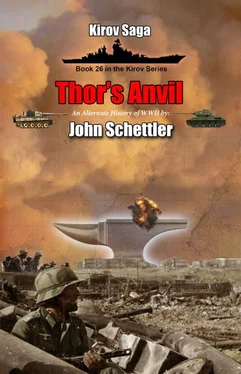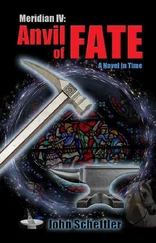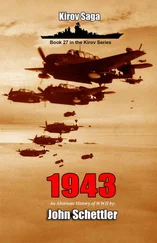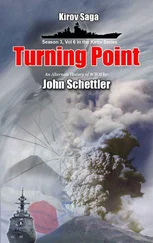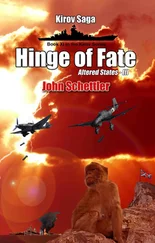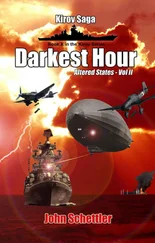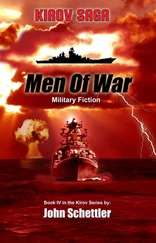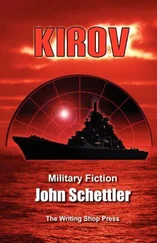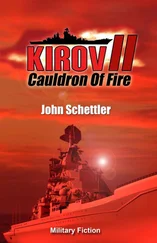Then, to his utter amazement, the falling aircraft leveled off just before it would have crashed into the sea. All the men on the bridge who saw it reacted, some pointing in awe. The Admiral’s eyes narrowed as he watched. It was coming, still burning from what he could see, low and fast over the water, and the fire from its tail glowed upon the sea. That such a descent could have been corrected at the last moment like that seemed an impossible feat of flying to his mind, but now he would see more than he ever thought possible. The aircraft suddenly veered left, then right again, dancing over the water like a mad kami from hell. The pilot must have finally lost control, he thought, but the longer he looked, the more those first moments of surprise extended into shock.
The maneuvers that aircraft was making could not be accomplished by any plane he had ever known, and yet there was something about the snap of its course corrections that led his mind to conclude they were carefully controlled.
The thing in the sky came flashing in at the ship, as if deliberately piloted and steered to collide with the carrier. Nagumo saw the deck of Akagi heave upward when it struck, exploding deep within the innards of the carrier. He staggered under the jarring impact, still stunned and not yet even knowing what could have possibly hit the ship. Yet he had seen it with his own eyes, and now the roar of chaos and fire was all about him. It was as if some demonic spirit had simply reached down and hammered his fist against the side of the carrier, breaking its hard metal hull and shattering all within.
The shock of that hit weighed heavily on the entire bridge crew, and they would soon learn that the entire center of the upper hanger deck was involved with fire.
“It was clearly a single plane,” said Fuchida. “I was well aft when it came, seeing to the three Zeros we have spotted on ready alert. The impact knocked me from my feet.”
“One plane?” said Shogo. “Its speed was fantastic! Could it have been the rocket weapons we were warned about?”
“The tales told by the Prophet?” said Hasegawa. “You might just as easily tell me it was a sky demon”
“That is not far from the truth,” said Genda. “Plane, rocket, it does not matter. We have seen what it can do, how it can move and strike us with such precision.”
“It must have been piloted,” said Shogo. “No rocket fired from over the horizon could hit with such accuracy. So if it was piloted, then it must have been launched from a carrier. We must find it and destroy it at once!”
Those first words, uttered in both awe and fearful respect for the weapon that had just attacked them, would soon reach the ears of the aeronautical designers at technical facilities all over Japan, and one in particular, an Ensign Mitsuo Ohta, took them to heart…. “No rocket fired from over the horizon could hit with such accuracy. It must have been piloted….”
The concept of rockets wat not a new thing, particularly to the people and culture of Japan. The Chinese Song Dynasty had created rudimentary rockets as early as the year 1232, and enemy warriors actually described them as “Fire Arrows,” with a devastating explosion on impact that could be heard five leagues away. In the 14th Century, the first multi-stage rocket would be born, described as a fire dragon in the artillery manual known as the Huolongjing , or Huo Lung Ching .
Used by the Chinese Navy, it would be fired from a ship, and could then even ignite smaller rocket propelled arrows from the front of the missile, the fiery breath of the monster used to attack the enemy. Others called them flying crows with magic fire. So it came as no great surprise that the Germans of the 1940s were not the only nation working on rocketry, and the Japanese interest in the subject had been dramatically accelerated when the Akagi was struck by what might easily be described as a flying dragon on the 16th of December, 1941.
Now Japan had finally seen the devastation that could be achieved by the use of naval rocketry. Work on their own rocket engines had been feverishly advanced since that time, and a great deal of progress had been made, particularly when a cache of secret documents were mysteriously delivered from the Japanese embassy in Orenburg, a “gift” from Ivan Volkov. In them were detailed plans of models the Germans were currently working on, and suggestions for solving problems in the design of their own rockets, improving range, airframe design, aeronautic stability.
The one problem that would evade a solution was how such weapons could be guided to their intended targets. No mechanical solution could be found. The Germans were exploring avenues of research using radio controlled systems that might be guided to targets visually by a pilot in the plane that carried and launched their aerial flying dragons. So the Japanese also began to develop versions of a missile that would look very much like the German V-1 Buzz Bomb.
The Ohka was their version, and they were working on a host of variants, some that might be mounted on a Model 24J Bomber, the one the Allies called “Betty.” This was the Model 11, and it was powered by three Type 4 Mark 1 Model 20 solid fuel rockets. It would have limited range, making it necessary to use the bomber to carry the weapon within 20 nautical miles of the target, and the bomber could not fly off the deck of a carrier. While these liabilities made the Model 11 unsuitable for use by the Navy, the Japanese Air Force was keenly interested in it as a possible means of precision bombing, because the guidance problem had been solved another way—the Ohka would be designed to be guided by a pilot. That solution would later lead the Americans to dub the missile the “Buka,” which was the Japanese word for “stupid,” or “fool.”
Yet the men who would line up in Japan to volunteer to pilot those revolutionary craft were no stupid fools, but the brave souls who would come to be known in Japan as the Jinrai Butai , the Thunder Gods. A plan was already in the works to produce 750 of the Model 11 Ohka missiles, and there would be 750 men ready to pilot them, each one willing to give his life to deliver the weapon he controlled to its target. There, painted on the side of the fuselage of the Ohka, was the image of a cherry blossom, and when the Thunder Gods flew, their souls would fall like those fragile flowers when they died, but they would take many souls with them, or so it was believed.
For the Navy, the Model 22 Ohka seemed much more interesting. It would use a new engine, and have a much longer range. In fact, the Germans were planning to launch their own V-1s from France, flying them over the English Channel to hit targets all over England, and they could achieve a range of 250 Kilometers, delivering an 850kg warhead of Amatol. The Navy wanted a similar engine on the Okha, and Yamamoto knew exactly where he could find the blueprints—in the library of a most unusual ship that had come to him after that fateful and untimely eruption of Krakatoa off Java. While that explosive event had savaged Japanese troops ashore and at sea, it also delivered a new champion to the fleet, the strange men and their marvelous ship of war, the Takami .
They had told the Admiral they could defend the fleet with their own amazing radars and aerial rocket weapons, and even pose a challenge to the mysterious raider that had attacked Akagi and sunk the Hiryu . A plan had been hatched to launch an ambush when the Siberians boldly moved to invade northern Sakhalin Island, then called North Karafuto by the Japanese. One of Yamamoto’s most trusted Admirals, Kurita, led two of Japan’s fast new battleships north to escort Takami , and the carriers Tosa and Kaga joined to provide the air power.
Читать дальше
